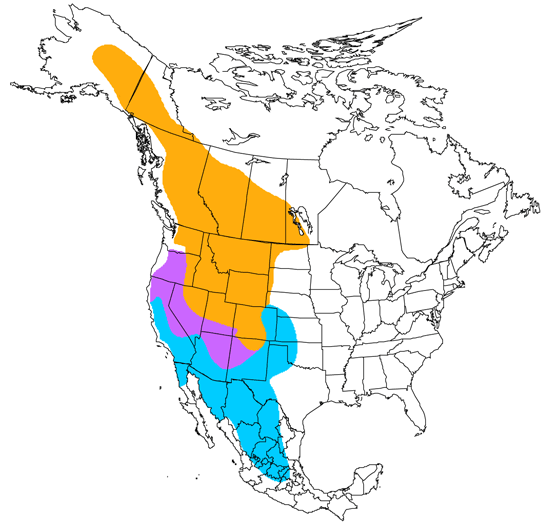Mountain Bluebird
Sialia currucoides

Perching

Length: 7 in. (18 cm )
Breeds in higher elevation coniferous forest edge with meadows or pastures. Typically seen sitting on low fence wire, posts or the ground, in the summer this bluebird catches insects like a flycatcher in the air or swoops down on them on the ground. In the winter it often forms large, loose flocks that move through agricultural fields, grassy prairies and open habitats at lower altitudes. Here it adds fruits to its diet. The low to medium height cavity nest is filled with a grassy floor mixed with pine needles and small twigs. It readily uses nest boxes if available.
The four-digit banding code is MOBL.
Bibliographic details:
- Article: Mountain Bluebird
- Author(s): Dr. Biology
- Publisher: Arizona State University School of Life Sciences Ask A Biologist
- Site name: ASU - Ask A Biologist
- Date published:
- Date accessed:
- Link: https://askabiologist.asu.edu/activities/bird/mountain-bluebird
APA Style
Dr. Biology. (). Mountain Bluebird. ASU - Ask A Biologist. Retrieved from https://askabiologist.asu.edu/activities/bird/mountain-bluebird
Chicago Manual of Style
Dr. Biology. "Mountain Bluebird". ASU - Ask A Biologist. . https://askabiologist.asu.edu/activities/bird/mountain-bluebird
Dr. Biology. "Mountain Bluebird". ASU - Ask A Biologist. . ASU - Ask A Biologist, Web. https://askabiologist.asu.edu/activities/bird/mountain-bluebird
MLA 2017 Style
Be Part of
Ask A Biologist
By volunteering, or simply sending us feedback on the site. Scientists, teachers, writers, illustrators, and translators are all important to the program. If you are interested in helping with the website we have a Volunteers page to get the process started.





